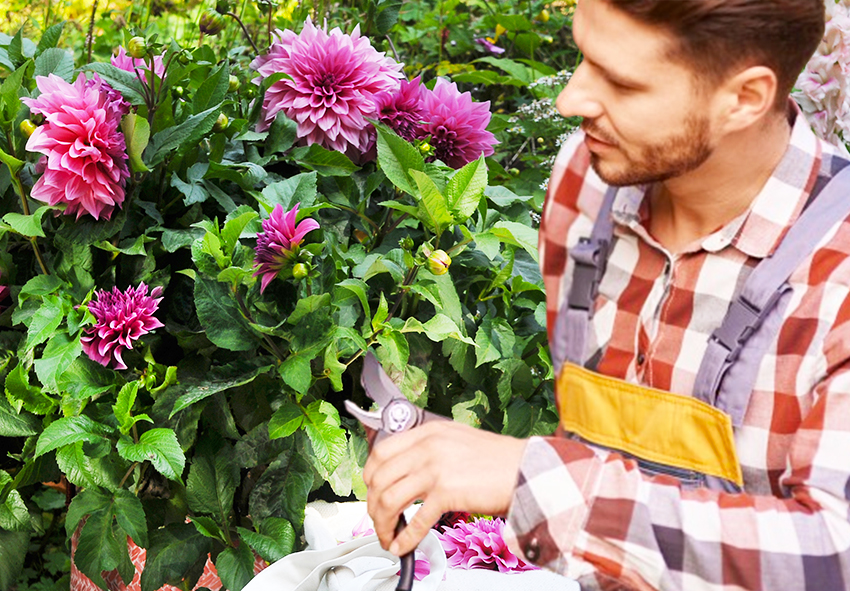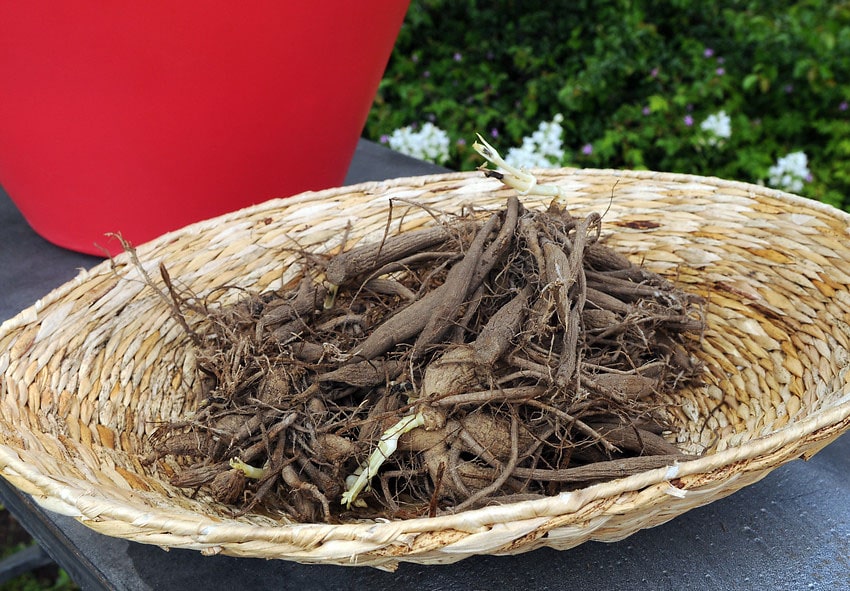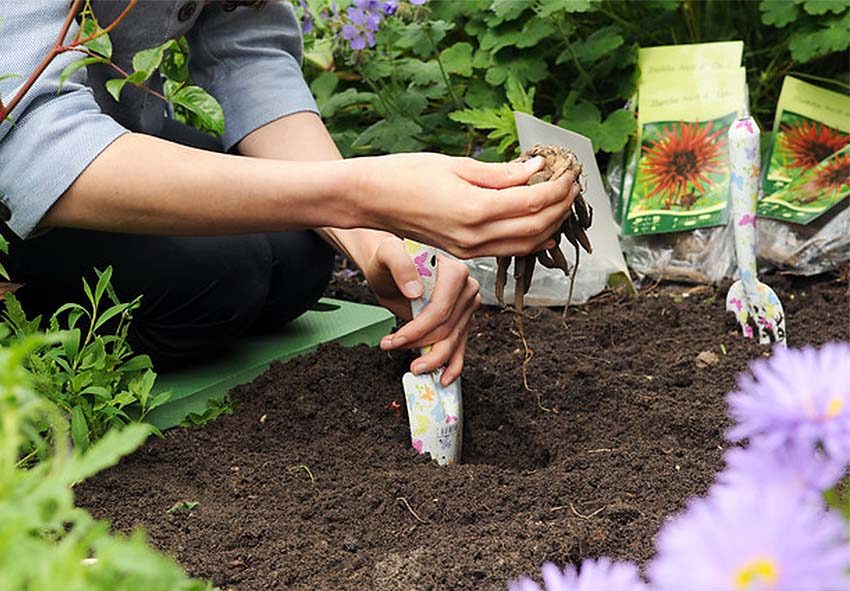Dahlias are among the most spectacular summer and autumn flowers, with their vibrant colors and long-lasting blooms. But many gardeners wonder what happens once the flowering season comes to an end. Proper post-bloom care is essential if you want your dahlias to thrive year after year. From deadheading to tuber storage, here’s a complete guide to caring for dahlias after blooming. Our gardening blog is a perfect place to find all the information you need!
Why Post-Bloom Care for Dahlias Matters

When the last dahlia petals fall, the plant still has work to do beneath the soil. Post-bloom care helps ensure strong tuber development and keeps plants healthy for next season. Without proper attention, you risk losing your dahlias over winter or weakening them for the following year’s flowering season.
Extending the life of dahlia plants
Caring for dahlias after blooming extends their life cycle and improves their performance year after year. Healthy tubers can produce more vigorous plants and larger flowers in the future. With the right aftercare, dahlias remain reliable showstoppers in your garden.
Ensuring healthy tuber development
Once blooming ends, dahlias put energy back into their tubers. This is the plant’s way of storing food and preparing for dormancy. Supporting this process with proper watering and foliage care ensures strong tubers that can be successfully lifted and stored.
Preparing for next year’s flowering season
The care you give after flowering directly affects next year’s display. By handling dahlias carefully after bloom, you set the stage for abundant, vibrant flowers in the following summer. Proper post-bloom practices are an investment in future beauty.
Deadheading and Pruning Dahlias After Blooming
Even after dahlias stop flowering heavily, deadheading remains important. Removing spent blooms prevents the plant from wasting energy on seed production. This helps extend flowering for as long as possible and improves tuber strength.
Why deadheading is essential
Deadheading encourages dahlias to continue blooming until frost. By cutting off faded flowers, you redirect energy back into the plant. This simple step not only maintains a tidy look but also supports tuber growth.
How to prune dahlias correctly
Use clean, sharp pruners to remove flowers and cut stems back to healthy leaves. Pruning can also involve cutting back weaker growth to promote stronger shoots. Careful pruning after bloom helps maintain the plant’s health.
Common mistakes to avoid
A common mistake is cutting foliage too early, which prevents tubers from storing enough energy. Avoid leaving dead flowers on the plant, as they can invite dahlia pests and disease. Timing and technique are crucial for success.
Lifting and Storing Dahlia Tubers
Once frost has blackened the foliage, it’s time to lift tubers from the soil. Proper lifting and storage protect them from rot and freezing. Storing tubers well is the key to keeping dahlias alive until spring.
When to lift tubers from the soil
The best time to lift tubers is after the first frost. Waiting until then allows the plant to fully store energy. Delaying too long, however, risks damage from hard freezes.
Cleaning and drying tubers properly
After lifting, gently remove excess soil and wash the tubers if needed. Allow them to dry for several days in a cool, ventilated space. This reduces the risk of rot during storage.
Best storage methods to prevent rot

Proper storage is the key to keeping dahlia tubers healthy through the winter months. Since excess moisture is the main cause of rot, the goal is to store tubers in a cool, dry, and well-ventilated environment. Below are some of the most effective storage methods gardeners use to keep dahlias safe until spring:
- Use peat moss or vermiculite – Pack tubers in slightly damp peat moss or vermiculite to maintain balanced humidity while preventing them from drying out.
- Try sand or sawdust – Dry sand or sawdust can provide a stable medium that keeps tubers dry and insulated.
- Cardboard boxes or wooden crates – Store tubers in breathable containers rather than sealed plastic bags, which trap moisture and encourage rot.
- Cool, dark, frost-free location – Aim for temperatures between 4–10°C (40–50°F) in a cellar, basement, or garage with steady airflow.
- Check regularly – Inspect tubers every few weeks and remove any that show signs of rot or shriveling to protect the rest.
Caring for Dahlia Foliage Post Bloom
After flowers fade, dahlia foliage continues to play an important role in tuber development. The leaves capture energy through photosynthesis, which strengthens the underground bulbs. Maintaining healthy foliage is essential for preparing dahlias for dormancy.
Watering and fertilizing after flowering
After blooming, reduce fertilizer use but continue moderate watering. Too much fertilizer encourages late, weak growth, while too little water can stress the plant. Balanced care ensures healthy tubers.
Importance of healthy leaves for tuber storage
Dahlia foliage should remain intact until it naturally yellows and dies back. This process ensures the plant has stored enough nutrients. Removing foliage too early weakens the tubers.
Signs your plant is ready for dormancy
Knowing when dahlias are ready for dormancy is crucial before lifting and storing the tubers. If you act too early, the tubers may not have stored enough nutrients for the next season. Look out for these clear signals that your dahlias have finished their growth cycle and are ready to rest:
- Yellowing foliage – Leaves turn yellow and begin to wither as the plant redirects energy to the tubers.
- Blackened stems after frost – The first autumn frost usually kills the top growth, signaling that dormancy has begun.
- Slowed or stopped blooming – Dahlias naturally stop producing flowers as the season ends.
- Drying stems – Stems lose firmness and collapse, showing that the plant is shutting down.
- Cooler soil temperatures – Shorter days and cooler nights trigger the plant’s natural dormancy cycle.
Overwintering Dahlias in Different Climates
How you overwinter dahlias depends largely on your climate. In colder zones, lifting and storing is essential. In mild regions, tubers can sometimes remain in the ground with protection.
Overwintering dahlias in cold climates
In regions with freezing winters, tubers must be lifted and stored indoors. This prevents them from freezing and dying in the ground. Proper insulation during storage is essential.
Caring for dahlias in mild regions
In areas with mild winters, some gardeners leave dahlias in the ground. A thick mulch layer can help protect tubers from temperature fluctuations. However, checking for rot or pests is still important.
Protecting dahlias left in the ground
If overwintering outdoors, cover the planting area with 6–8 inches of mulch or straw. This insulates the soil and keeps tubers safe. Remove the mulch in spring to allow new growth.
Preparing Dahlias for the Next Season

Spring preparation ensures your stored tubers produce strong plants. By dividing, replanting, and providing the right soil conditions, you’ll set the stage for stunning summer blooms.
Dividing tubers in spring
Divide large clumps of tubers before planting. Each division should have at least one eye or growing point. This increases your stock and ensures healthy growth.
Soil preparation and replanting tips
Choose well-drained soil enriched with compost. Plant tubers once the risk of frost has passed. Proper soil preparation supports healthy root and stem development.
Encouraging strong growth and abundant blooms
After planting, water regularly and provide a balanced fertilizer. Pinching out the growing tips encourages bushier plants. With the right start, dahlias will reward you with abundant flowers.
Conclusion
Caring for dahlias after blooming ensures they remain strong, healthy, and ready for the next growing season. From deadheading to lifting and storing tubers, each step plays a role in their survival. With proper post-bloom care, your dahlias will return year after year, filling your garden with vibrant color!
Frequently Asked Questions (FAQs) about Dahlias After Blooming
1. What should I do with dahlias after they finish blooming?
After dahlias finish blooming, continue deadheading faded flowers and caring for the foliage until frost arrives. Once the first frost blackens the leaves, cut the stems down and lift the tubers. Proper cleaning, drying, and storage will protect them over winter, ensuring healthy plants for the next season.
2. Can I leave dahlias in the ground over winter?
Yes, in mild climates where the ground does not freeze deeply, you can leave dahlias in the ground. Cover the planting area with a thick layer of mulch or straw to protect tubers from temperature changes. In colder climates, it’s safer to lift and store tubers indoors until spring.
3. When should I dig up dahlia tubers?
Dahlia tubers should be dug up after the first frost, when foliage has blackened and the plant has gone dormant. This timing allows tubers to store enough nutrients for next year. Carefully lift them with a fork, clean gently, and let them dry before storing in a cool, frost-free place.
4. How do I store dahlia tubers for winter?
To store dahlia tubers, first clean and dry them for several days in a well-ventilated area. Once dry, place them in boxes or bags filled with slightly damp peat moss, sand, or sawdust. Keep them in a cool, dark, frost-free environment. Check occasionally for rot or shriveling during storage.
5. How can I order Holland dahlias from your online store?
Ordering Holland dahlias from our online store Dutch-bulbs.com is simple and convenient. Visit our website and browse our selection of dahlia varieties, including those sourced from Holland. Our team will carefully pack and ship your bulbs, ensuring they arrive fresh and ready for planting.
Published: 03.10.2025
